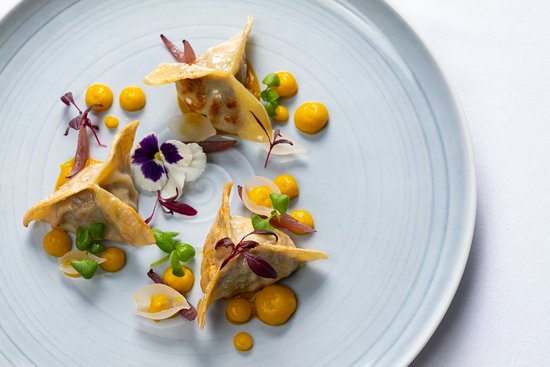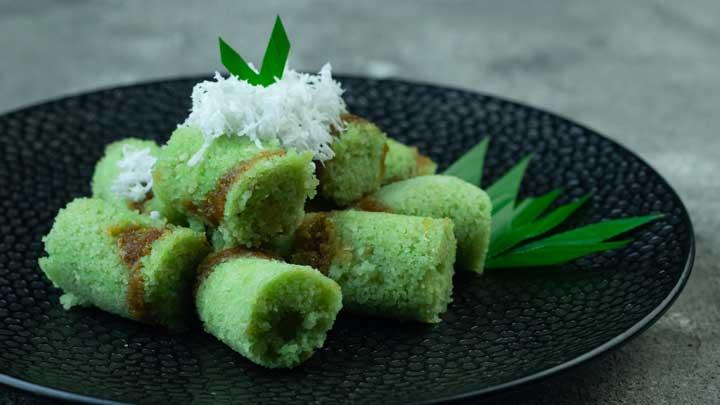Originally inspired by Chinese jiaozi dumplings, gyoza has evolved into a uniquely Japanese dish with a thinner wrapper, a more finely minced filling, and a signature pan-fried cooking method that creates its famous crispy bottom. Whether served at ramen shops, izakayas (Japanese pubs), or made at home, gyoza remains a favorite among food lovers.
In this guide, we will explore:

- The history and origins of gyoza.
- Different types of gyoza and their unique flavors.
- Step-by-step recipe for making authentic Japanese gyoza.
- The best fillings, dipping sauces, and side dishes.
- Why gyoza is a must-try dish in Japanese cuisine.
1️⃣ The History & Origins of Gyoza
- Chinese Roots Culinary: The Birth of Jiaozi 🇨🇳
Gyoza originated from Chinese dumplings (jiaozi, 饺子), which date back over 1,800 years to the Han Dynasty. These dumplings were traditionally eaten during Lunar New Year celebrations, symbolizing prosperity and good fortune. - How Gyoza Came to Japan 🇯🇵
After World War II, Japanese soldiers who had been stationed in China returned home with a love for jiaozi. They adapted the recipe to suit Japanese tastes, creating a thinner wrapper, finely chopped filling, and a pan-fried cooking method (yaki gyoza).
Gyoza vs. Jiaozi: What’s the Difference?
| Feature | Japanese Gyoza | Chinese Jiaozi |
|---|---|---|
| Wrapper | Thinner, more delicate | Thicker, chewier |
| Filling | Finely minced, garlicky | Chunkier, more varied |
| Cooking Method | Pan-fried (Yaki Gyoza) | Boiled, steamed, or pan-fried |
| Flavor | Light, savory, with garlic and ginger | Bolder, with more variety (spicy, herbal) |
📌 Fun Fact: The city of Utsunomiya is known as the “Gyoza Capital of Japan,” boasting more gyoza restaurants per capita than anywhere else in Japan!
2️⃣ Types of Gyoza & Their Unique Flavors
Gyoza comes in several different styles, each offering a distinct experience.
🥟 1. Yaki Gyoza (Pan-Fried Gyoza) – The Classic Favorite
- The most popular type in Japan.
- Crispy bottom, soft and juicy top.
- First fried in a pan, then steamed to perfection.
📌 Best For: Dipping into soy sauce with rice vinegar and chili oil.
🔥 2. Age Gyoza (Deep-Fried Gyoza) – Extra Crunchy Goodness
- Golden, crispy, and extra crunchy.
- Popular in izakayas (Japanese pubs) as a bar snack.
📌 Best For: Pairing with sweet chili sauce or ponzu (citrus soy sauce).
🍲 3. Sui Gyoza (Boiled Gyoza) – Light & Comforting
- Soft and delicate, cooked in hot water or broth.
- Often served in light, flavorful soups.
📌 Best For: A healthier, milder alternative to fried gyoza.
🌿 4. Mushi Gyoza (Steamed Gyoza) – Soft & Juicy
- Steamed in a bamboo steamer, preserving moisture.
- Similar to dim sum-style dumplings.
📌 Best For: Dipping into black vinegar and sesame oil.
3️⃣ How to Make Authentic Japanese Gyoza
🛒 Ingredients (Serves 4-6)
Gyoza Wrappers (or use store-bought!):
- 2 cups all-purpose flour
- ½ cup warm water
- Pinch of salt
The Filling:
- 250g ground pork (or chicken/shrimp for variations)
- 1 cup cabbage (finely chopped & squeezed dry)
- 2 green onions (finely sliced)
- 2 cloves garlic (minced)
- 1 tsp ginger (grated)
- 1 tbsp soy sauce
- 1 tbsp sesame oil
- ½ tsp salt & black pepper
Cooking:
- 2 tbsp vegetable oil
- ½ cup water (for steaming)
The Dipping Sauce:
- 2 tbsp soy sauce
- 1 tbsp rice vinegar
- ½ tsp chili oil (optional)
🔪 Step-by-Step Instructions
1. Prepare the Dough (If Making From Scratch)
- Mix flour and salt, gradually adding warm water.
- Knead into a smooth, elastic dough, then cover and rest for 30 minutes.
- Roll into a log and cut into small pieces, then roll each into thin circles (about 3 inches wide).
📌 Pro Tip: Use store-bought wrappers for convenience!
2. Make the Gyoza Filling
- Finely chop cabbage and squeeze out excess water.
- Mix with pork, green onions, garlic, ginger, soy sauce, sesame oil, salt, and pepper.
- Stir until well combined (a slightly sticky texture is ideal).
📌 Pro Tip: Chill the filling for 15 minutes to enhance flavor.
3. Assemble the Gyoza
- Place 1 teaspoon of filling in the center of each wrapper.
- Wet the edges with water, then fold into a half-moon shape.
- Pleat the top edge while pressing the sides together.
📌 Pro Tip: Make at least 6-8 pleats for a traditional gyoza shape!
4. Cook the Gyoza (Yaki Gyoza Method)
- Heat 1 tbsp oil in a non-stick pan over medium heat.
- Arrange gyoza flat-side down and fry for 2-3 minutes until golden brown.
- Add ½ cup water, cover, and steam for 5 minutes.
- Uncover and cook for another 2 minutes until water evaporates and the bottoms crisp up.
📌 Pro Tip: Use a glass lid to watch the steaming process!
5. Serve & Enjoy!
- Arrange on a plate and serve with soy sauce, rice vinegar, and chili oil.
- Garnish with sesame seeds or chopped green onions.
📌 Best Side Dishes: Serve with ramen, miso soup, or Japanese pickles!
4️⃣ Why Gyoza Is a Must-Try Dish in Japanese Cuisine
- Perfect for Any Occasion – Snack, appetizer, or main dish.
- Fun to Make – Great for family cooking nights!
- Endless Variations – Try shrimp, mushrooms, or even cheese-filled gyoza.
- Beloved Street Food – Enjoyed at ramen shops, izakayas, and festivals across Japan.
📌 Fun Fact: Japan hosts gyoza festivals, where chefs compete to create the most delicious dumplings!
Conclusion: The Joy of Homemade Gyoza
Whether you prefer them crispy, steamed, or boiled, gyoza is a timeless favorite that blends bold flavors, satisfying udoy88 textures, and cultural heritage. Making them at home is easy, fun, and rewarding, allowing you to experiment with fillings and flavors.
💬 Have you tried making gyoza at home? What’s your favorite filling? Share your thoughts below! 🥟🔥🇯🇵✨



















